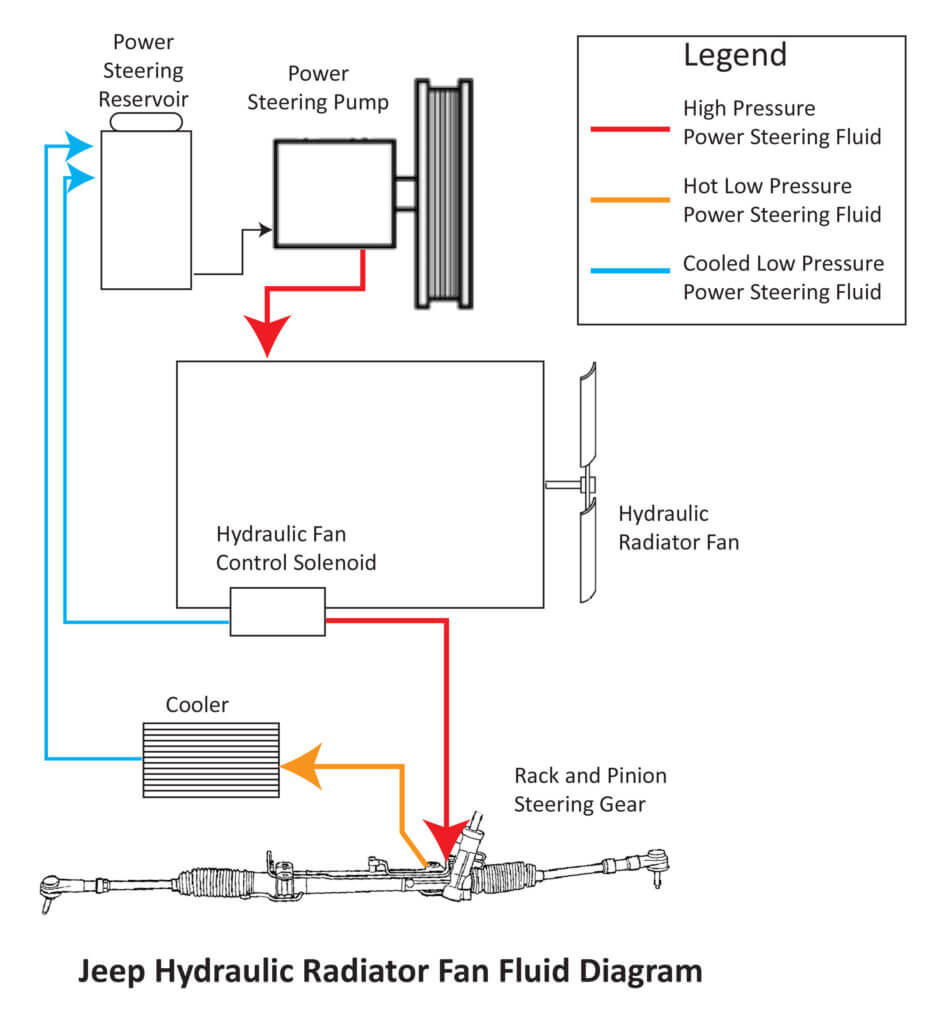Jeep Diesel hydraulic radiator fan Issues
How does a Jeep diesel hydraulic radiator fan work?
The Jeep diesel radiator fan is completely different than anything you’ve seen on other engines. Instead of using an electric fan or a mechanical fan with a viscous clutch, Jeep uses a hydraulic radiator fan. The hydraulic radiator fan receives power steering fluid pressure from the power steering pump.
How does the Jeep diesel regulate engine cooling?
Jeep uses a hydraulic radiator fan on the 5.7L and 3.0L diesel engine. The hydraulic radiator fan has a two stage G-rotor hydraulic motor that’s powered by high pressure power steering fluid provided by the power steering pump.
The fan control solenoid regulates flow to the hydraulic motor by pulsing the power steering fluid based on commands from the fan control module (FCM). See inputs below.

Jeep hydraulic radiator fan fluid flow diagram
The Jeep shop manual warns that: “The hydraulic fan and drive is not serviceable. Therefore any failure of the fan blade, hydraulic fan drive or fan shroud requires replacement of the fan module because the fan blade and hydraulic fan drive are matched and balanced as a system and servicing either separately would disrupt this balance.”
Fan control module operation
The FCM determines hydraulic radiator fan speed by monitoring inputs from three sensors:
Engine coolant temperature (ECT)
Transmission oil temperature (TOT)
AC System pressure
Based on the inputs from these three sensors, the FCM determines duty cycle on the fan control solenoid and thus regulates hydraulic radiator fan speed. WARNING: Even when the engine doesn’t require cooling, the fan will still run at idle at speeds between 100 and 500-RPM. This is due to the minimum flow required to flow through the G-rotor motor.
What goes wrong with the Jeep hydraulic radiator fan system?
The most common problem with the system occurs when a sensor reading is out of range. For example, a high AC pressure reading will cause the radiator fan to run at high speed at all times. Always start your diagnosis by checking the readings from the ECT, TOT and AC pressure transducer. If the readings are within range, use a scan tool to check the pulse width commanded by the fan control module.
Other problems with the Jeep hydraulic radiator fan system
Make sure you’re using the proper power steering fluid. There’s no such thing as a “universal” power steering fluid.
Check power steering fluid level and condition.
Check the condition of the filter at the bottom of the power steering fluid reservoir.
Check for debris clogging the power steering oil cooler.
©, 2019 Rick Muscoplat
Posted on by Rick Muscoplat
